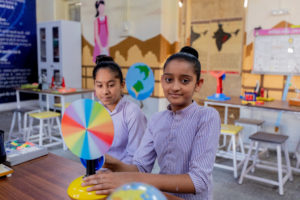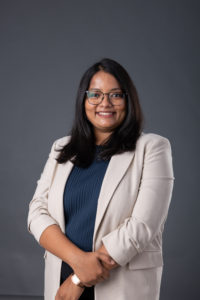A start-up by biotechnologist Monica Yadav is helping young students of science stream thrive through hands-on learning tools with girl students from rural areas benefiting tremendously. Ranjita Biswas in conversation with the innovator
 As a biotechnology engineering student, Monica Yadav noticed many graduates struggling to apply theory in practice. This motivated her to conduct workshops for school students, where they explored science through hands-on activities and model-making to connect theory to practice and develop critical thinking early in their academic careers. Their interest inspired her to create Respire Experiential Learning (REL), a start-up that provides comprehensive STEM (science, technology, engineering and math) education programmes for students through hands-on learning tools.
As a biotechnology engineering student, Monica Yadav noticed many graduates struggling to apply theory in practice. This motivated her to conduct workshops for school students, where they explored science through hands-on activities and model-making to connect theory to practice and develop critical thinking early in their academic careers. Their interest inspired her to create Respire Experiential Learning (REL), a start-up that provides comprehensive STEM (science, technology, engineering and math) education programmes for students through hands-on learning tools.
“Over the past nine years, I’ve developed STEM and robotics kits and established affordable tinkering labs in both urban and rural schools,” says Yadav. “Moreover, as a strong advocate for women in engineering, I lead the initiative ‘Girls Do Science’ to inspire young girls to pursue STEM fields.”
With over 900 innovation labs in 11 states across India, the Ahmedabad-based start-up has reached more than 800,000 students.
 Yadav is an alumna of the International Visitor Leadership Program (IVLP), the U.S. State Department’s premier professional exchange program that connects professionals with their counterparts in the United States through short-term visits. She participated in the “Hidden No More -Women in STEM” 2023 cohort. Inspired by the movie Hidden Figures, Yadav examines women’s contributions to STEM through research and development, education and teaching, leadership and public policy formation.
Yadav is an alumna of the International Visitor Leadership Program (IVLP), the U.S. State Department’s premier professional exchange program that connects professionals with their counterparts in the United States through short-term visits. She participated in the “Hidden No More -Women in STEM” 2023 cohort. Inspired by the movie Hidden Figures, Yadav examines women’s contributions to STEM through research and development, education and teaching, leadership and public policy formation.
Excerpts from an interview:
Why is it important to introduce comprehensive STEM education solutions early in school?
Introducing STEM education early in school is vital because it cultivates lifelong learning habits and essential skills like decision-making, logic and discipline. During my initial workshops, I noticed how students thrive when given opportunities to explore and create, underscoring the importance of hands-on learning.
The impact on students was profound when we transformed traditional science labs into dynamic STEM labs, complete with interactive do-it-yourself kits and trained teachers. One memorable transformation occurred at a remote village school in a mining area. Here, girls who previously had limited educational resources were learning about renewable energy, robotics and Sustainable Development Goals (SDGs) at our STEM labs. Witnessing their excitement as they engaged with solar panel kits and built simple robots is an unforgettable experience.
In what way have you introduced these tools to the communities?
We’ve brought our STEM labs to communities through over 150 interactive experiences in fields like physics, chemistry, biology, robotics and coding. We aim to foster logical thinking and the practical application of concepts among students.
Our labs are mobile, durable and designed for easy set-up across various age groups to ensure inclusivity. We incorporate themes like SDGs, nutrition and climate change through interactive board games and activities. We also collaborate with government and industry leaders to reach a wider audience.
Can you tell us more about these tools? How are they designed?
Our STEM tools are designed to address the specific learning needs of schools and communities. We start with an initial baseline survey to understand specific learning requirements, which helps us tailor our tools and resources effectively. We also provide the content in local languages, which makes learning easier.
Please tell us about your experiences during the IVLP. How did the participation help you as a STEM educator?
Women in STEM often face challenges related to confidence and isolation. The IVLP addressed these issues by connecting women with similar passions and challenges, fostering a sense of community and support. The program also reinforced the need for better access and equal participation for women in the workforce.
Participating in the programme was an enriching experience—it helped me network and share my experiences with 39 other women from varied STEM fields from across the world, which was incredibly inspiring.
Witnessing the U.S. government’s strong policies and workspaces aimed at promoting more women in STEM was eye-opening. It shifted my approach to designing our REL programs with a focus on inclusivity and accessibility. Our tools also include a fair representation of women scientists, researchers, engineers and homemakers, ensuring that girls see themselves in these roles.
(SPAN-TWF)
Trans World Features
(Credit to author and TWF mandatory)



